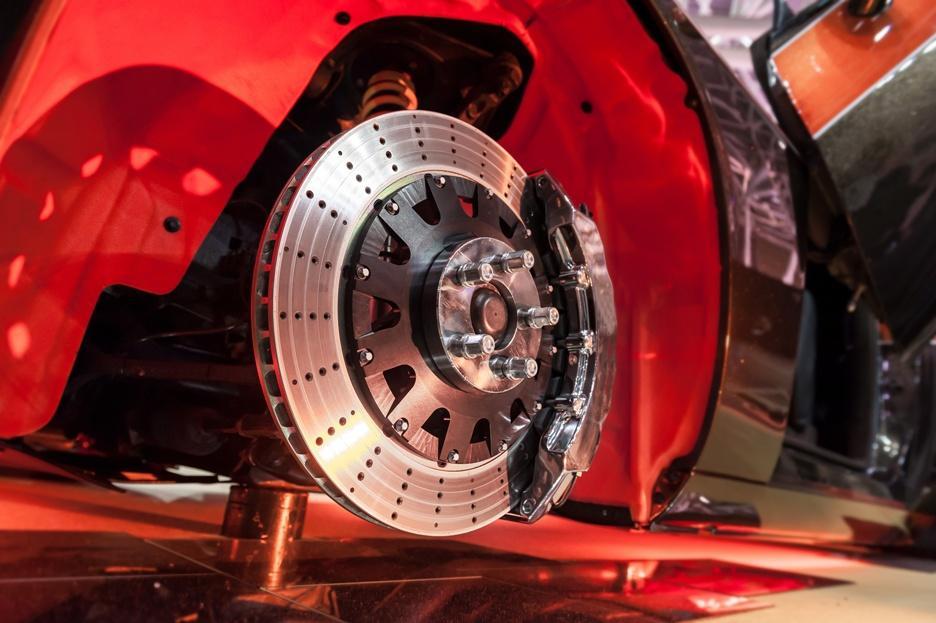How Do You Know When Brake Pads Need Changing?
Knowing the signs of brake pads and brake rotors going bad is critical for driving safety. Not only will you be saving money on brake repair, but you may potentially be preventing an accident caused by failing brakes. But how do you know when brake pads need changing?
You may be wondering just what are brake pads and what happens when they wear out? A vital component of the brake system, brake pads are located between the brake shoe (the part that clamps down, slowing the tires’ rotation) and the brake drum. Every time you engage your brakes, the friction created causes minute amounts of wear and tear. Over time, this deterioration starts to add up and the pads, as well as the brake rotors, will become thinner and thinner.
How do you know when brake pads need changing?
- Screeching or squealing noise -- This sound is caused by a small, metallic shim indicator that’s embedded in the brake pad for this purpose. A thin layer of dust on the pads can cause a very similar screeching sound, but it will go away when using the brakes.
- Less than ¼” of Brake Pad -- Visually inspect the brake pads by looking through the tire spokes. If the pads are less than a ¼ inch thick (about 3 millimeters), it may be time to replace them.
- Metallic Grinding and Growling -- This can be a sign that not only are your brake pads worn away but that your brake discs and calipers are making contact. This metal on metal contact can cause even further brake damage.
- Warning Lights -- Some vehicles have an indicator light on the dashboard that will signal when it’s time to replace the brake pads. Check your owner’s manual to see if your vehicle comes equipped with the low-paid warning system.
Brake pads can generally last between 30,000-35,000 miles—varying from vehicle to vehicle and from driver to driver. For example, if you drive mostly in urban areas or in heavy traffic, you’ll be using your brakes a lot more frequently than someone who drives in rural locations or on open highways. Some people also tend to “ride the brake” (meaning they press and depress their brakes frequently), wearing out the pads and brake rotors faster than usual.
Wondering how do you know when brake pads need changing? Contact our ASE Certified Technicians at Gary’s Quality Automotive for more information about brake pads and brake rotors and to schedule a brake service. Our auto shop proudly serves vehicle owners in Grand Island, NE, Wood River, NE and Doniphan, NE.
Wondering how do you know when brake pads need changing? Ask a brake repair specialist at Gary’s Quality Automotive about brake rotors and pads.
Knowing the signs of brake pads and brake rotors going bad is critical for driving safety. Not only will you be saving money on brake repair, but you may potentially be preventing an accident caused by failing brakes. But how do you know when brake pads need changing?
You may be wondering just what are brake pads and what happens when they wear out? A vital component of the brake system, brake pads are located between the brake shoe (the part that clamps down, slowing the tires’ rotation) and the brake drum. Every time you engage your brakes, the friction created causes minute amounts of wear and tear. Over time, this deterioration starts to add up and the pads, as well as the brake rotors, will become thinner and thinner.
How do you know when brake pads need changing?
- Screeching or squealing noise -- This sound is caused by a small, metallic shim indicator that’s embedded in the brake pad for this purpose. A thin layer of dust on the pads can cause a very similar screeching sound, but it will go away when using the brakes.
- Less than ¼” of Brake Pad -- Visually inspect the brake pads by looking through the tire spokes. If the pads are less than a ¼ inch thick (about 3 millimeters), it may be time to replace them.
- Metallic Grinding and Growling -- This can be a sign that not only are your brake pads worn away but that your brake discs and calipers are making contact. This metal on metal contact can cause even further brake damage.
- Warning Lights -- Some vehicles have an indicator light on the dashboard that will signal when it’s time to replace the brake pads. Check your owner’s manual to see if your vehicle comes equipped with the low-paid warning system.
Brake pads can generally last between 30,000-35,000 miles—varying from vehicle to vehicle and from driver to driver. For example, if you drive mostly in urban areas or in heavy traffic, you’ll be using your brakes a lot more frequently than someone who drives in rural locations or on open highways. Some people also tend to “ride the brake” (meaning they press and depress their brakes frequently), wearing out the pads and brake rotors faster than usual.
Wondering how do you know when brake pads need changing? Contact our ASE Certified Technicians at Gary’s Quality Automotive for more information about brake pads and brake rotors and to schedule a brake service. Our auto shop proudly serves vehicle owners in Grand Island, NE, Wood River, NE and Doniphan, NE.
